Finnegans Wake Page 1
The first page of Finnegans Wake will be used here to establish a "mental map" suitable to normal persons. Although in this whole job there is an extensive examination, this file here draws from any of the examined texts or ideas that was able to help us to achieve that.
Before we start, let's do something that is standard procedure for Ulysses, i.e., which is or was its scheme. The scheme for Finnegans, according to Clive Hart, in his Structure and motif in Finnegans wake (1962) is the following:
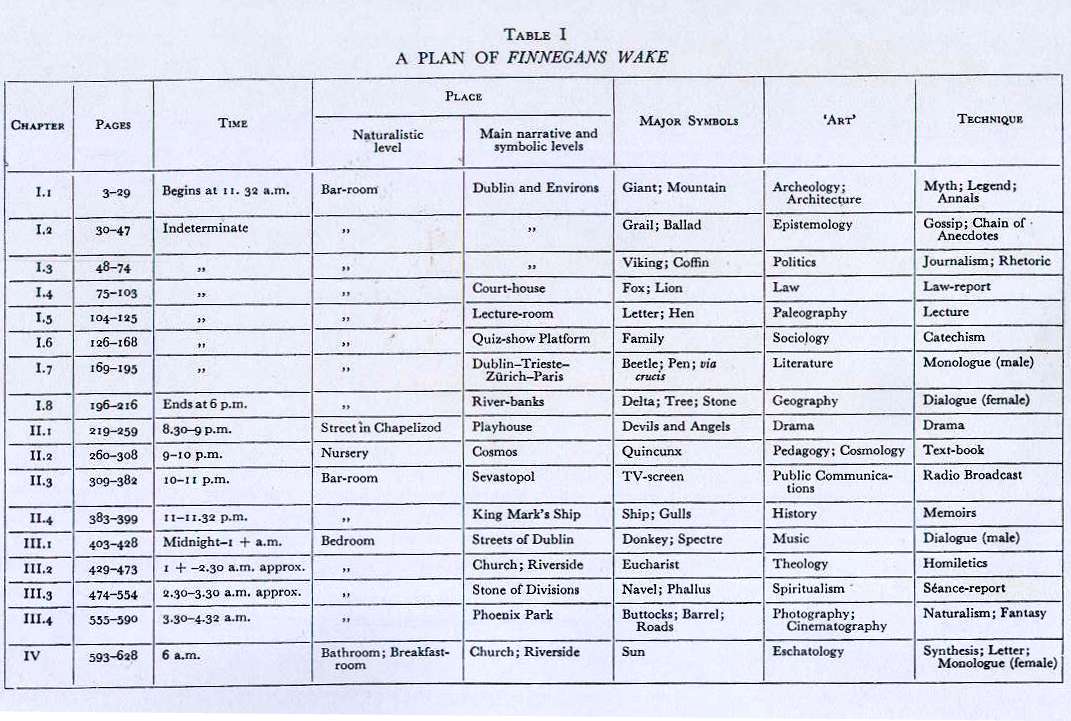
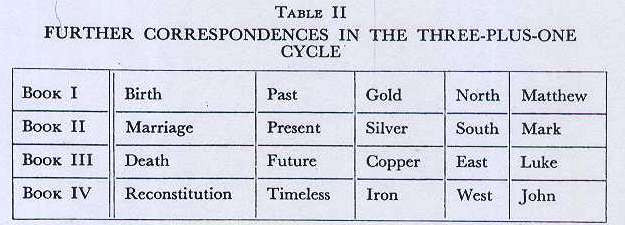
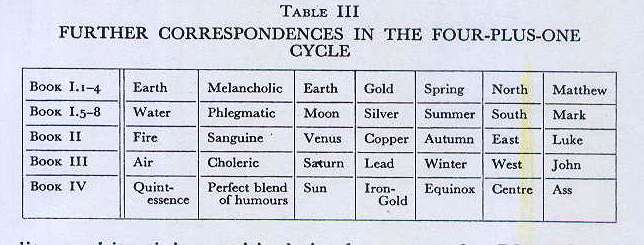
The Square as a symbol of Finnegans Wake

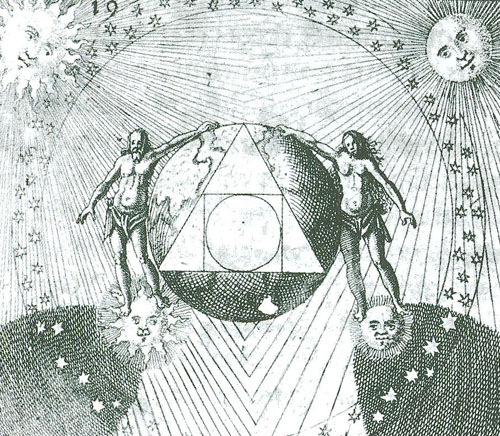
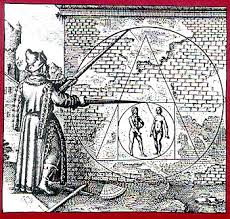

Press the figures
"The 'squared circle' or 'squaring the circle' is a 17th century alchemical glyph or symbol for the creation of the Philosopher's Stone. The Philosopher's Stone was supposed to be able to transmute base metals into gold and perhaps be an elixir of life."
The gold, which obviously has never been achieved (neither the Philosopher's Stone), became the "wise men gold", which is to know the meaning of life. Which we know, is impossible to be achieved. But you can believe that you found it...
I would like to make it clear that
these "explanations" are much more a symptom of ignorance and superstition,
narrowmindness and lack of information. When Joyce decided that he didn't believe
in his religion any more, he made himself open, as it happens with all humans,
to believe in anything. Actually he created a religion from which he was the
prophet. Despite the fact that what he believed most was himself, what he offers
to all his acolytes is the premium of understanding him and what he is all about
as the ultimate salvation. To further understand what is at play, let's take
a look of what these figures mean and what probably he had in mind when he used
them, specially when he said that he
was the greatest engineer who ever lived: See also Eric McLuhan Preface,
page xii of his The
Role of Thunder in Finegans Wake. It comes to mind the observation
Bertrand Russel
made :"The first effect of emancipation from the Church was not to
make men think rationally, but to open their minds to every sort of antique
nonsense" (In A
History of Western Philosophy,London, 1946, page 523. And
Bertrand Russel didn't
accept Jesus as such neither
believed in God.
Quadrature has different meanings. What interests us is the quadrature of the circleand I quote from there:
"It is the challenge of constructing a square with the same area as a given circle by using only a finite number of steps with compass and straightedge. More abstractly and more precisely, it may be taken to ask whether specified axioms of Euclidean geometry concerning the existence of lines and circles entail the existence of such a square."
As it can be read above, squaring the circle was considered impossible till the end of the 19th century. But it is so if you want perfect accuracy. That is why it is suitable for the metaphor associated with it about religion:
To say that some one is attempting to square the circle means he or she is attempting an impossible task. This metaphor has been used as a symbol in alchemy, particularly in the 17th century.
The third image above, from left
to right, is a symbol of a circle within a square within a triangle within a
circle an is used to represent alchemy and the philosopher's stone, which is
the ultimate goal of alchemy.
Within the smaller circle are a man and woman, the two halves of our nature
that are brought together through alchemy.
Circles are representation of things infinite, such as the spiritual. Squares representation of the material because of the number of physical things that come in 4s (four seasons, four directions, four physical elements, etc.)
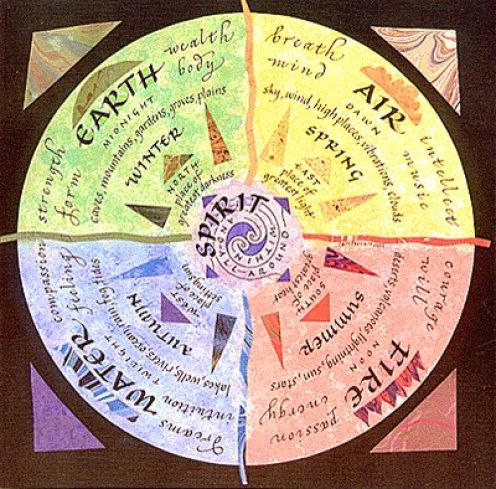
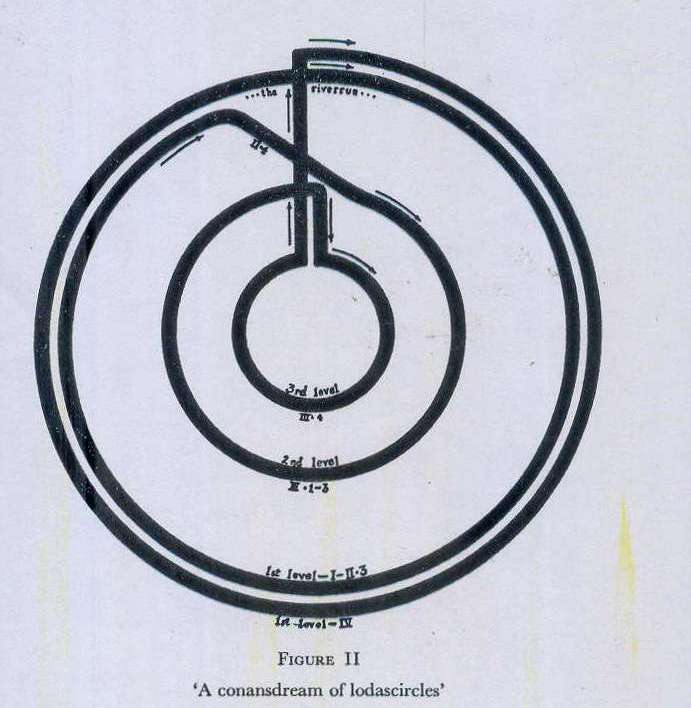
The sentence it
took Joyce twelve years to write
'The
Suspended Sentence' 106.13
On 8 November 1926, Joyce wrote to Harriet Shaw Weaver:
'The book really has no beginning or end. (Trade secret, registered at Stationers Hall.) It ends in the middle of a sentence and begins in the middle of the same sentence.' Letters 1, 246
Although Joyce came up with this idea in 1926, when he wrote the book's opening, it wasn't until twelve years later that he completed the sentence with the ending.
Here's the end, which is the beginning of the sentence. It's spoken by Anna Livia Plurabelle, the River Liffey dying as she merges with the sea: 'A way a lone a last a loved a long the...' With the repeated 'a' and 'l' we expect a 'p' to follow, to complete the initials of Anna Livia Plurabelle. And there it is, at the bottom of the page!
|
page 628 Finn, again! Take.Bussoftlhee, mememormee! Till thousendsthee. Lps. The keys to.Given! A way a lone a last a loved a long the page 1 riverrun, past Eve and Adam's, from swerve of shore to bend of bay, brings us by a commodius vicus of recirculation back to Howth Castle and Environs. Sir Tristram, violer d'amores, fr'over the short sea, had passencore rearrived from North Armorica on this side the scraggy isthmus of Europe Minor to wielderfight his penisolate war: nor had topsawyer's rocks by the stream Oconee exaggerated themselse to Laurens County's gorgios while they went doublin their mumper all the time: nor avoice from afire bellowsed mishe mishe to tauftauf thuartpeatrick: not yet, though venissoon after, had a kidscad buttended a bland old isaac: not yet, though all's fair in vanessy, were sosie sesthers wroth with twone nathandjoe. Rot a peck of pa's malt had Jhem or Shen brewed by arclight and rory end to the regginbrow was to be seen ringsome on the aquaface. The fall (bababadalgharaghtakamminarronnkonnbronntonnerronntuonnthunntrovarrhounawnskawntoohoohoordenenthurnuk!) of a once wallstraitoldparr is retaled early in bed and later on life down through all christian minstrelsy. The great fall of the offwall entailed at such short notice the pftjschute of Finnegan, erse solid man, that the humptyhillhead of humself prumptly sends an unquiring one well to the west in quest of his tumptytumtoes: and their upturnpikepointandplace is at the knock out in the park where oranges have been laid to rust upon the green since devlinsfirst loved livvy. |
page 1 meaning
From: Annotated Finnegans Wake (with Wakepedia, Wikipedia and more)
riverrun ( French 'rêverons' = let us dream together)
Rivers run eternally to the sea,
where they evaporate into clouds that rain down and start the cycle over again.
Joyce equated the river with Anna Livia Plurabelle, ALP
= ![]()
Eve and Adam's
Adam and Eves Church (The reversion in the text is supposedly intentional. Joyce corrects patriarchal Judaism by restoring Eve's precedence over Adam). On second thoughts wakepedia should think it over... Eve betrayed God when she felt to the temptation of the snake to try from the tree of good and evil.. and took Adam with her... Eve was the original trouble-maker...The S M P at Ulysses is pointing to that...
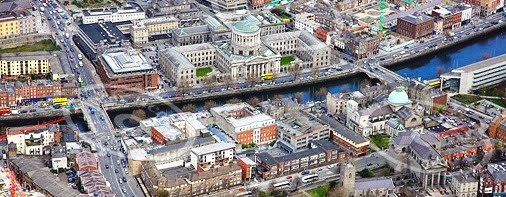
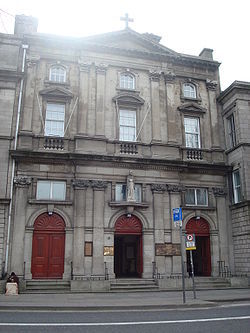
Adam and Eve's is blue dome on right (the river is all rivers, but especially the Liffey that runs through Dublin, past Adam and Eve's Church, founded in a tavern in 1618.
from swerve of shore to bend of bay
From the south shore of the River Liffey through Dublin Bay

by a commodious vicus of recirculation
Giambattista Vico's theory of cyclical history was one of Joyce's inspirations. Giovan Battista (Giambattista) Vico (djo'vanni bat'tista). 1668–1744, Italian philosopher. In Scienza Nuova (1721) he postulated that civilizations rise and fall in evolutionary cycles, making use of myths, poetry, and linguistics as historical evidence
Since Vico plays a basic and most important role in Finnegans, it is worth to figure out more about him and his ideas. You'll get that pressing the figure above.
Howth Castle and Environs (Howth Castle and surroundings)
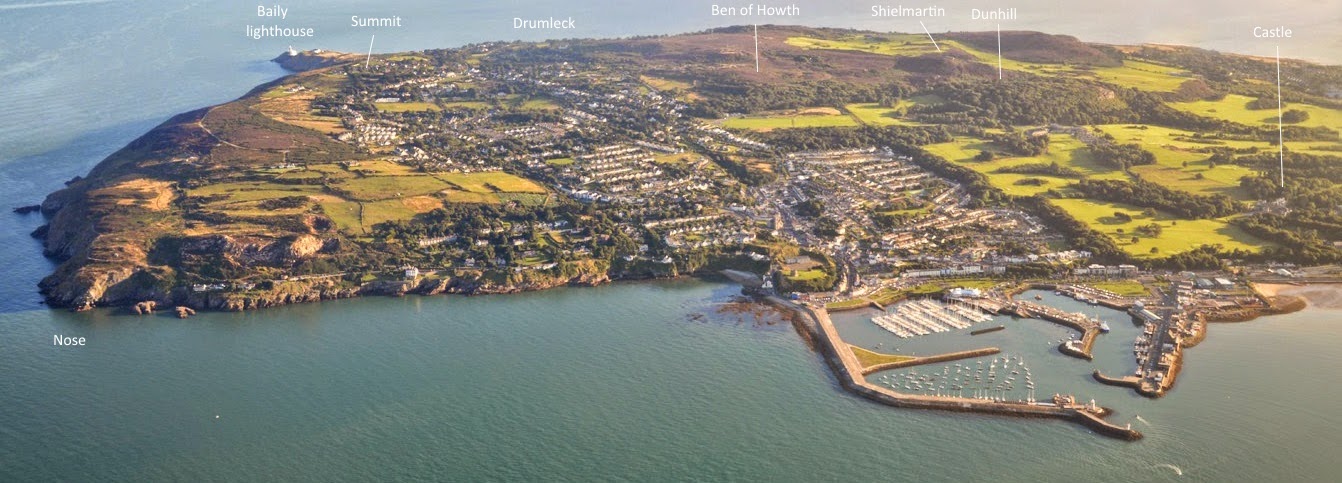
Sir Tristram, violer d'amores, fr'over the short sea
Isolde was engaged to Tristan's uncle, King Mark, when a potion caused them to fall in love
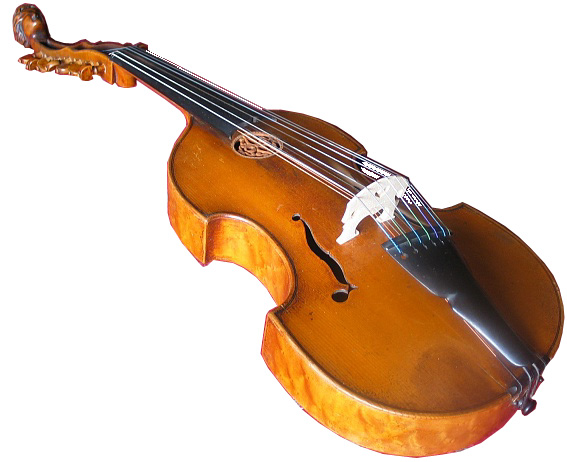
had passencore rearrived from North Armorica
pas encore' = not yet (French) literally
'not again'?
passenger?
Armorica was the
part of France closest to Ireland
"passencore = pas encore and ricorsi storici of Vico" JAJ to HSW
RE-arrival fits Bedier's Tristan but not Howth's Tristram (Wagner?)
invasions are often preceded by scouting visits, or motivated by conflicts that arose there earlier
this side the scraggy isthmus of Europe Minor
'scraggy' can mean either thin or
jagged
in Ulysses, Sargent and Virag are described as having scraggy necks
'isthmus' requires two large landmasses connected by a thin one
Asia Minor is not an isthmus
the geography here is very blurred: Europe itself is sort of a scraggy isthmus, but why 'Minor'? why "on this side"?
one archetype here is the exile returning, another is the outsider invading (at some level these are identical)
"Isthmus of Sutton a neck of
land between Howth head and the plain
passencore = pas encore and ricorsi storici of Vico
rearrived = idem
wielderfight = wiederfechten = refight" JAJ to HSW
to wielderfight
his penisolate war:
wieder = again (German)
wield weapon
Healy says peeNIGHsolet, i say penISSolet
Peninsular War
"wielderfight = wiederfechten = refight; Arthur Wellesley (of Dublin) fought in the Peninsular war; Tristan et Iseult, passim" JAJ to HSW
topsawyer's rocks by the stream Oconee exaggerated themselse to Laurens County's gorgios while they went doublin their mumper all the time:
The Topsawyer’s rocks are a formation of rocks along the Oconee River in Laurens County Georgia. It runs through Dublin, GA
1926 Letter to HSW:
Dublin, Laurens Co, Georgia, founded by a Dubliner, Peter Sawyer, on r. Oconee.
Its motto: Doubling all the time.
Establishment of Dublin, GA is colonial ! Joyce has established since the end of Portrait of the Artist as a Young Man that the domination of the Irish mind by Rome or London needs to be undone.
avoice from afire
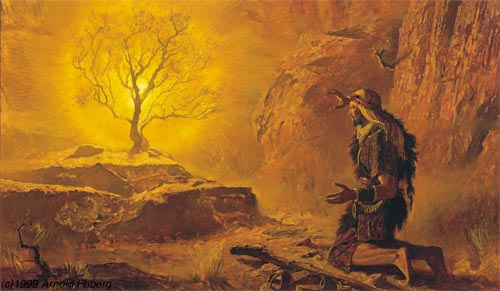
“Avoice from afire” alludes to the story from Exodus where God spoke to Moses in the form of a burning bush.
afire — flaming, on fire + a voice from afar.
1926 Letter to HSW:
"The flame of Christianity kindled by S. Patrick on Holy Saturday in defiance of royal orders"
bellowsed
1926 Letter to HSW:
Bellowed = the response of the peatfire of faith to the windy words of the apostle
mishe mishe to tauftauf thuartpeatrick:
Joyce glosses this phrase in a 1926 letter to his publisher, Harriet Shaw Weaver.
Mishe = “I am” (Irish) i.e. Christian
Mise, pronounced mishe, is Irish/Gaelic for me. Joyce took Irish lessons but fell out with Padraig Pearse (Ellmann, R. James Joyce, p. 61). The Irish language would have held a huge anxiety for Joyce given his need to redefine Irishness.
Tauf = baptism (German)
“Thou art Peter and upon this rock” etc. (a pun in the original Aramaic)
venissoon
Very soon; venison
1926 Letter to HSW:
The venison purveyor Jacob got the
blessing meant for Esau
Genesis 27:19
And Jacob said unto his father, I
am Esau your firstborn; I have done according as you bade me: arise, I pray
you, sit and eat of my venison, that your soul may bless me.
This Jacob-Esau rivalry is one of Joyce’s persistent parallels throughout
FW and sets up the character assassination of Shem (Chapter
1.7).
buttended a bland old isaac
Joyce explains in a 1926 letter to Harriet Shaw Weaver that this is a reference to Charles Parnell, a hugely significant Irish Politician who in a way unifies Joyce’s struggles with Ireland as he had a social, political and sexual presence in the zeitgeist.

He ousted Isaac Butt, another Irish politician, from leadership of the Irish Parliamentary Party.
vanessy
From Finnegans Wiki:
the name Vanessa was invented by
Jonathan Swift and given to Esther Vanhomrigh, whom Swift had met in 1708 and
whom he tutored; the name was created by taking “Van” from Vanhomrigh’s
last name and adding “Essa”, the pet form of Esther
The name is first used in Swift’s autobiographical poem Cadenus and Vanessa,
published in 1726.

sosie sesthers
Again, from a 1926 letter to Harriet Shaw Weaver:
Sosie means “double”— Miss Vanhomrigh and Miss Johnson had the same Christian name.
The two women mentioned above were important figures in the life of the Irish writer Jonathan Swift: Miss Esther Vanhomrigh (Vanessa) and Miss Esther Johnson (later known by Stella).
Sesthers is another one of Joyce’s clever uses of a dual-meaning word. Twin Esthers; Twin Sisters.
twone nathandjoe.
twone: portmanteau of “two” and “one”; also shares sonority with “twine” and “twin,” suggesting that two are bound together as one (identical twins are usually assumed to be be two that are one).
nathandjoe: portmanteau of the names Nathan and Joe. Again, this twining together of two as one. The twin Shem is mentioned in the next sentence. Perhaps Joyce is creating Biblical parallels for twins Shem and Shep. Nathandjoe also continues the references to Jonathan Swift. FDV: this reads: “twone Jonathan” and was later changed (possibly to rend Jonathan into Twone name)
To further strengthen this claim:
Nathan was a prophet who reprimanded King David for committing adultery (speculated to possibly be the transgression HCE commits in FW).
Joseph, son of Abraham, was sold into slavery by his jealous siblings; later in FW, Shaun is sent down the river Liffey in a barrel by his sister and brother.
Rot
rot — to decompose + rota (l) — wheel + FDV: Not Rot a peck of pa’s malt had Shem and Son Hem or Sen Jhem or Sen brewed by arclight & bad luck worse end bloody end rory end to the regginbrew regginbrow was to be seen on ringsun ringsome the waterface.
peck of pa's malt
First draft version: “Not a peck of malt” > “Rot a peck of malt” > “Rot a peck of pa’s malt”
In Joyce’s 1926 letter to his
patron Harriet Shaw Weaver:
“Willy brewed a peck of maut;
Noah planted the vine and was drunk.
John Jameson is the greatest Dublin distiller
Arthur Guinness is the greatest Dublin brewer”
Here Joyce is referencing a song “Willie Brew’d A Peck O' Maut” composed by Robert Burns a scotish poet. This song is a celebration for Whiskey and Beer.
Here we have 3 sets of twins.
1) Willy from Robert Burns' song & Noah
2) Jameson & Guiness
3) Whiskey & Beer
The “twin” concept resurfaces numerous times in Finnegans Wake.
Jhem or Shen
Jhem or Shen = Jameson, made into two names.
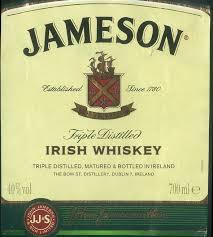
The Jameson distillery was a twin to the Guiness brewery.
Shem is one of HCE’s twin sons. It is Later that Shem formerly brewed his own liquor in some shameful gourds.
rory end to the regginbrow
1926 Letter to HSW:
rory = Irish = red
Rory = Latin, roridus = dewy
At the rainbow’s end are dew and the colour red: bloody end to the lie
in Anglo-Irish = no lie
regginbrow = German regenbogen + rainbow
ringsome
ringsome — German ringsum, around (HWS) + ring-link + ringsum: (German) around ? Rings um are the first two words of Theodor Mommsen’s monumental History of Rome.
A ringsome rainbow must be completed by the mirror image of itself reflected on the aquaface.
FDV: The story tale of the fall is retailed early in bed and later in life throughout most christian minstrelsy. The great fall of the wall at once entailed at such short notice the fall of Finnigan, the solid man and that the humpty hill hillhead himself promptly prumptly sends an inquiring unquiring one well to the west in quest of his tumptytumtoes.
This is the fall of man. The story of Adam and Eve, the Earth Father & Earth Mother. It is followed by the voice of God (Thunderwords).
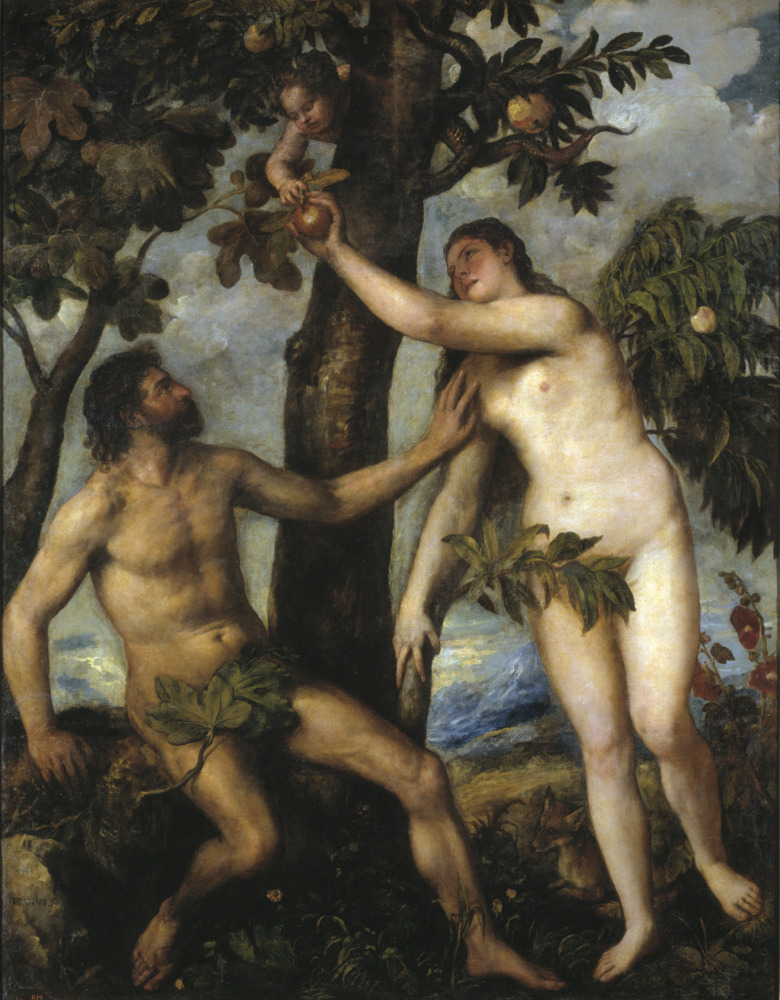
(bababadalgharaghtakamminarronnkonnbronntonnerronntuonnthunntrovarrhounawnskawntoohoohoordenenthurnuk!)
The first of ten key thunder words in Finnegans Wake.
According to the key seen below, these thunderwords are the voice of God.
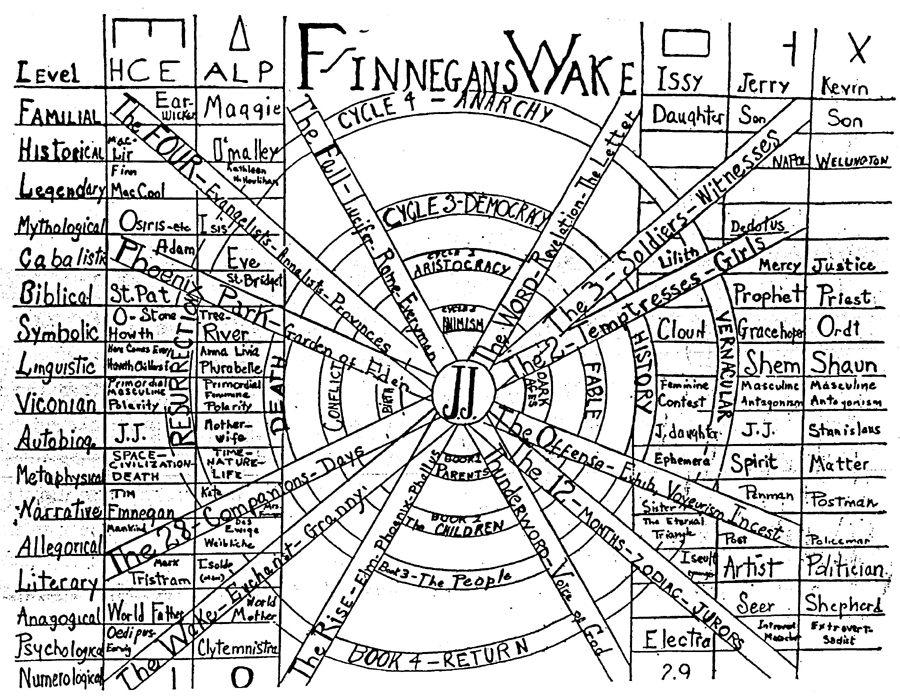
This thunderword is 100-letters long. When all ten thunderwords are added together there are 1001 letters in all. This was done by Joyce to invoke The Arabian Nights, The Book of a Thousand Nights and a Night
When consulting the key (shown above) under the “Numerological” Level (Left and to the bottom), one may observe that HCE (the protagonist of many names, a Protestant) and ALP (the HCE’s wife, an Irish Catholic) are both listed as “1” and “0” respectively.
Eric McLuhan has an interesting publication on the subject. The Role of Thunder in Finnegans Wake
once wallstraitoldparr
Old Parr — may refer to Thomas Parr who reputedly lived to be 152 years old. Who at the age of 100 years old, had an affair and an illegitimate son.
“Wallstrait oldpair” may refer to HCE and his wife ALP who were once regarded as sober/honest people.
retaled early in bed
retold as a bedtime story.
minstrelsy.
minstrelsy — the singing and playing of a minstrel + Christy Minstrels — black face troop which came from America to London in 1857. Moore and Burgess were their rivals.
pftjschute
In Ulysses, Scylla and Charibdis, Joyce uses the phrase *pfuiteufel as a an exclamation of disgust and a reference to the devil .(‘James Joyce - Ulysses (Chap. 9 - Scylla and Charybdis)
pftjschule in FW is a conglomeration of pfui/disgust and chute/fall.
erse solid man
Genesis 2:7: “And the LORD God formed man of the dust of the ground, and breathed into his nostrils the breath of life; and man became a living soul.”
unquiring
A portmanteau, a neologism or a ‘monster’ as Jorge Luis Borges called some of jj’s words.

Borges was ahead of the game in reading Joyce as he was able to read it unbanned in Argentina before Europe and USA. Borges then quickly grasped what Finnegan’s Wake was about in language terms. This frustrated him as he felt Spanish wasn’t as malleable as English. It also inspired him and left an indelible Joycean mark on latin American lit. See Interview
upturnpikepoint
upturnpikepoint — turn up one’s toes — to die, pike — a medieval weapon, turnpike — a barrier place across a road to stop passage till the toll is paid. It means that Tim Finnegan was on a border of the real world and underworld.
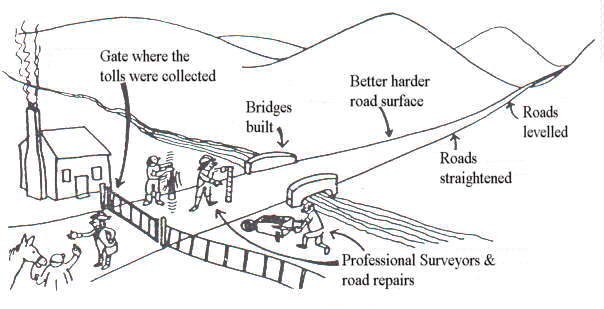
oranges have been laid to rust upon the green
rust — (Dutch) rest
The Dutch House of Orange from which came the Irish Protestant hero William
III (William of Orange).
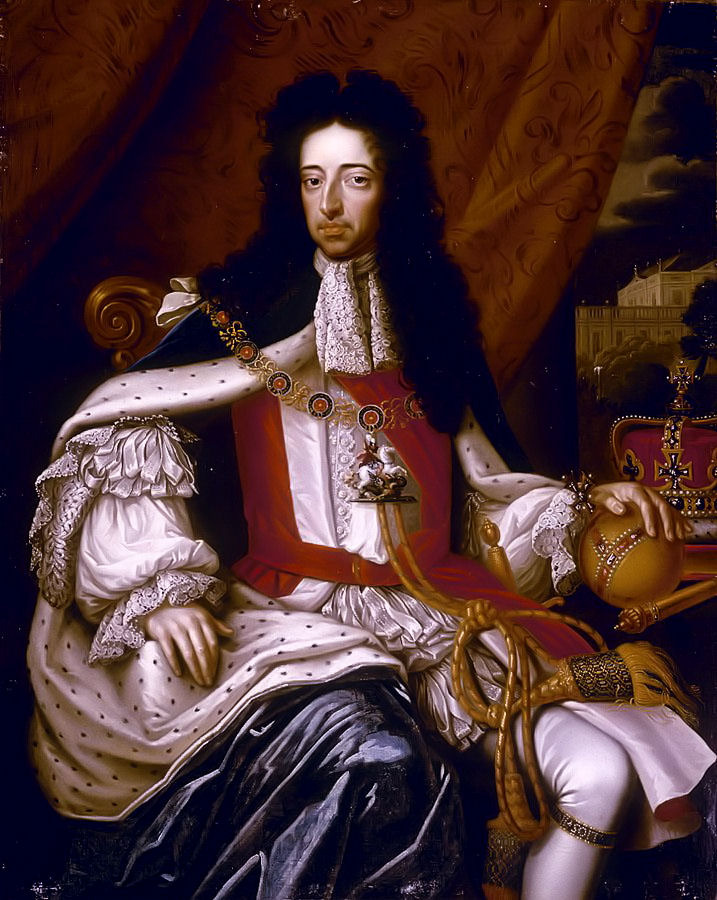
green — is symbolic of Ireland’s Catholic, Nationalist or Republican factions.
devlinsfirst
devlinsfirst — Dublin’s first
livvy.
The River Liffey
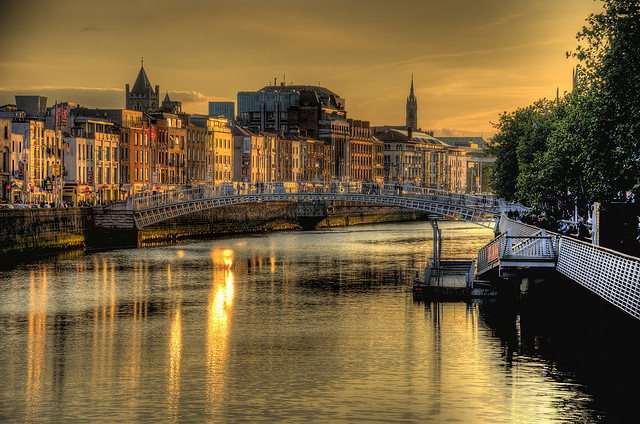
Page 1 : riverrun to livvy
The Page 1 of Finnegans is divided into two halves with Dublin dominating the first half. A near normal description of Dublin bay starts us off with the sweep of Howth around to Dún Laoghaire/Kingstown described followed by historical and mythological refernces to Dublin. Dublin, a town on the Oconee river in Georgia, USA is referred to along with Sir Amory Tristam, conqueror of Ireland whose family castle is in Howth.
Characters are introduced in the second half including: Jhem, Shen, izzy, Finnegan, Isaac often in biblical allusions before returning to the Liffey.
The whole page consists of three paragraphs which illustrate a recurrent pattern in the Wake. The lines place us in a Dublin through the explicit use of the word us but without characters. The "us" is the reader. The following two paragraphs don’t extend a narrative but offer us potential outcomes. The third paragraph tells us of a story being retold not the story itself.
